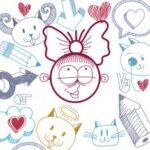Below are materials for a book-based study group. These include a book summary, vocabulary words, discussion questions, and debate topics. Study tools that might be helpful include:
- Automated Text to Speech: Speechify Text to Speech Voice Reader
- Translation: Google Translate
- Two language subtitles for videos: Language Reactor
- For word usage examples: Playphrase.me or Yarn.co
Most of these tools are available as browser extensions on desktops and as apps for mobiles
 Summary
Summary
“Quiet: The Power of Introverts in a World That Can’t Stop Talking” by Susan Cain is a compelling exploration of the undervalued strengths and contributions of introverts. The book challenges the cultural bias that favors extroversion and provides a comprehensive look into the psychology, neuroscience, and sociology of introversion. Cain argues that Western society, particularly in the United States, has been dominated by an “Extrovert Ideal,” which has marginalized introverts and undervalued their unique abilities.
The Extrovert Ideal
The book opens with a discussion of the “Extrovert Ideal,” a term Cain uses to describe the societal preference for outgoing, social, and charismatic individuals. This ideal is deeply ingrained in various aspects of American life, from educational settings to corporate culture. Cain traces the historical roots of this bias, pointing out that the rise of industrialization and the shift from an agricultural society to a corporate one have contributed to the prominence of extroverted traits. Salesmanship, public speaking, and the ability to “win friends and influence people” have become highly prized skills, often at the expense of more introverted qualities like thoughtfulness, introspection, and the ability to work independently.
The Power of Introverts
Despite the societal preference for extroversion, Cain argues that introverts bring a unique set of strengths that are often overlooked. Introverts tend to be more reflective, better listeners, and capable of deep focus—qualities that are essential in various fields such as research, writing, and problem-solving. The book provides numerous examples of introverted individuals who have made significant contributions to society, including civil rights activist Rosa Parks, physicist Albert Einstein, and Apple co-founder Steve Wozniak. Cain argues that these individuals were able to make groundbreaking contributions not in spite of their introverted traits but because of them.
The Biology of Personality
One of the most intriguing sections of the book delves into the biological underpinnings of introversion and extroversion. Cain discusses studies that show how these traits can be observed even in infants and explores the role of neurotransmitters like dopamine in influencing social behaviors. She also cites research that suggests that introverts and extroverts have different levels of arousal, which affects their preference for stimulation. This section serves to demystify the notion that introversion is a “flaw” that needs to be corrected, presenting it instead as a fundamental aspect of human biology that has its own set of advantages.
The Social and Cultural Angle
Cain also takes a global perspective, examining how different cultures view introversion and extroversion. She points out that not all societies adhere to the Extrovert Ideal. For instance, many Asian cultures value traits like quiet contemplation, humility, and collective harmony over individual assertiveness and charisma. This cultural difference often manifests in educational settings, where Asian classrooms may prioritize group cohesion and collective learning, in contrast to the American focus on individual participation and leadership.
Coping Mechanisms and Strategies
The latter part of the book is particularly practical, offering a range of coping strategies for introverts who have to navigate an extroverted world. Cain provides tips for public speaking, networking, and even surviving open-plan offices, which are often a nightmare for introverts. She suggests that introverts can develop a “free trait” strategy, where they act out of character in service of a core personal project. For example, an introverted professor might become animated and engaging in the classroom because they are passionate about teaching. Cain also offers advice for extroverts who want to understand and collaborate more effectively with their introverted peers, emphasizing the importance of creating environments where both personality types can thrive.
Conclusion
“Quiet” serves as a comprehensive and enlightening guide to understanding the complexities of introversion and extroversion. It challenges long-standing societal norms that undervalue introverted traits and provides a new framework for appreciating the diversity of human personality. Cain argues that by recognizing and valuing the unique strengths and contributions of introverts, we can foster more inclusive, effective, and harmonious communities, workplaces, and relationships.
By dissecting the Extrovert Ideal, highlighting the strengths of introverts, delving into the biological factors that shape our personalities, examining the cultural variables that influence societal views on introversion and extroversion, and providing practical advice for both introverts and extroverts, Susan Cain’s “Quiet” offers a multifaceted look at a topic that affects us all. It serves as a call to action to rethink our attitudes about introversion and to fully appreciate the quiet power of introverts.
Vocabulary
- Groundbreaking
- Marking a significant new development.
- The groundbreaking research changed the way we understand human behavior.
- Permeates
- Spreads throughout something.
- The aroma of freshly baked bread permeates the entire house.
- Sidelining
- Pushing to a less important position.
- Sidelining talented employees can lead to decreased productivity and morale.
- Charismatic
- Possessing charm and appeal.
- The charismatic leader easily won the support of the team.
- Industrialization
- Transformation from an agricultural society to one based on industry.
- Industrialization led to significant changes in the workforce and economy.
- Reflective
- Engaged in deep thought.
- After a reflective pause, she shared her insights on the topic.
- Neurotransmitters
- Chemicals that transmit signals in the nervous system.
- Dopamine is one of the neurotransmitters that play a role in mood regulation.
- Demystify
- To make something clear and understandable.
- The lecture aimed to demystify complex scientific concepts.
- Contemplation
- Deep reflective thought.
- He sat in quiet contemplation before making his decision.
- Assertiveness
- Confident and forceful behavior.
- Her assertiveness in the meeting impressed her colleagues.
- Universally
- By everyone; in every case.
- Not all cultural norms are universally accepted.
- Frameworks
- Basic structures that underlie a system or concept.
- Different cultures have different frameworks for understanding health and wellness.
- Inclusive
- Including everyone; not excluding any particular groups.
- The program aims to be inclusive and cater to diverse needs.
- Diversity
- Variety; the state of having different forms or types.
- The diversity of the team’s skills contributed to its success.
- Morale
- The confidence and enthusiasm of a group or individual.
- Team-building activities can boost employee morale.
Discussion Questions
- Do you agree with the concept of an “Extrovert Ideal” in Western culture?
- What are some unique strengths that introverts bring to a team or organization?
- How do you think the education system could better accommodate introverted students?
- Can you think of a situation where being introverted was an advantage?
- How do cultural perspectives on introversion and extroversion differ?
- Do you believe introversion and extroversion are biologically determined?
- What are some coping strategies that introverts can use in social situations?
- How can extroverts better understand and work with introverts?
- Do you think workplaces are generally biased towards extroverts?
- What role do you think social media plays in promoting the “Extrovert Ideal”?
- How can parents nurture the strengths of their introverted children?
- Can an introvert successfully take on a leadership role? Why or why not?
- Do you think introversion is often misunderstood? If so, how?
- How does the book challenge common stereotypes about introverts?
- What are some professions where being introverted could be beneficial?
- How can understanding your own introverted or extroverted tendencies improve your relationships?
- Do you think society is becoming more accepting of introverted traits?
- Can introverts and extroverts have successful romantic relationships?
- How do introverted traits manifest differently in men and women?
- What was the most surprising insight you gained from the book?
Debate Topics
- Is the “Extrovert Ideal” Harmful to Society?
- Should Education Systems Be Tailored to Accommodate Introverted Students?
- Is Introversion a Biological Trait or a Social Construct?
- Does the Corporate World Discriminate Against Introverts?
- Can Introverts Be Effective Leaders?
- Do Social Media Platforms Promote Extroversion at the Expense of Introversion?
- Is the Western Bias Toward Extroversion a Form of Cultural Imperialism?
Views: 16






Leave a Reply